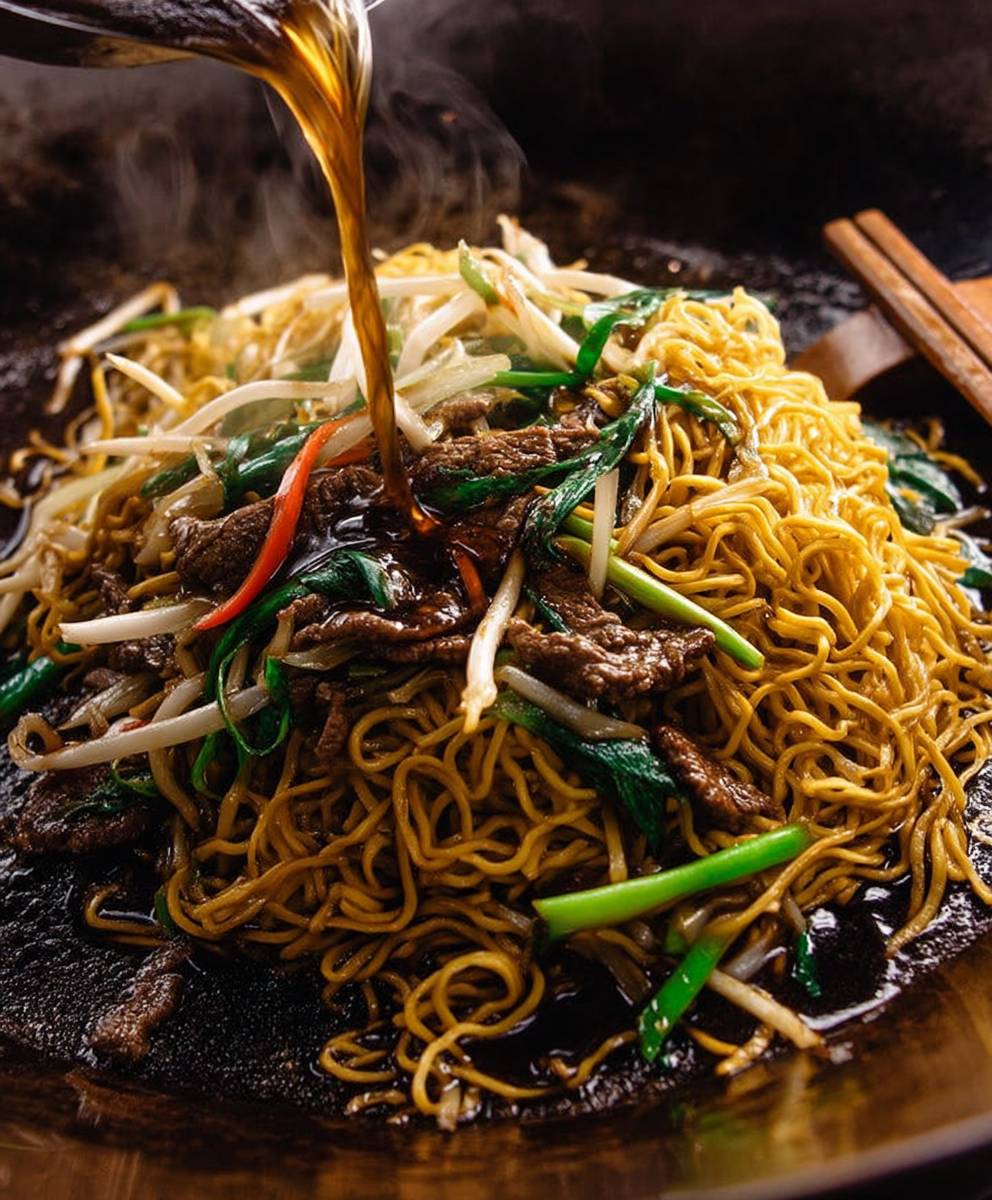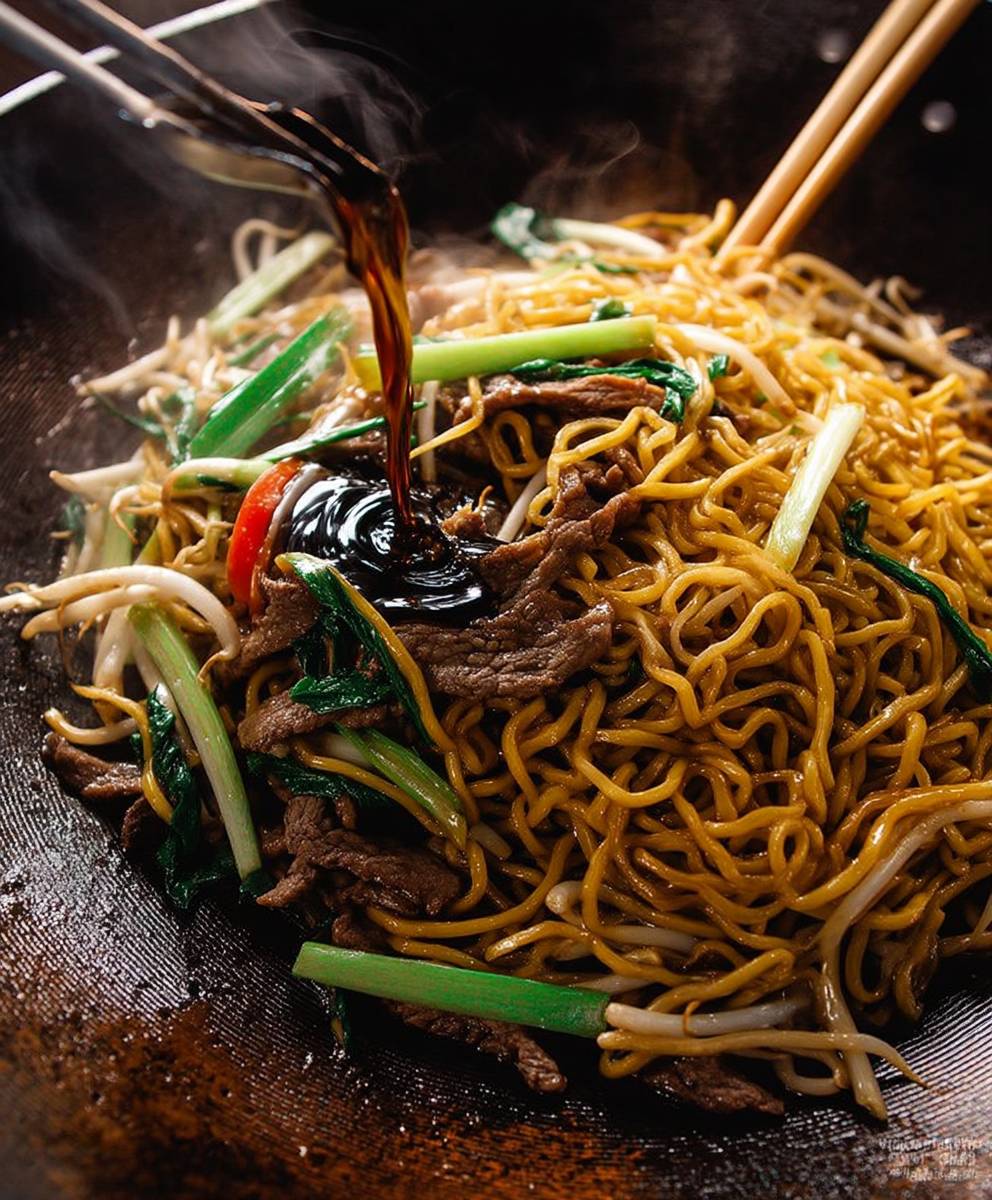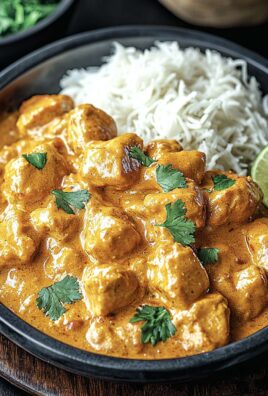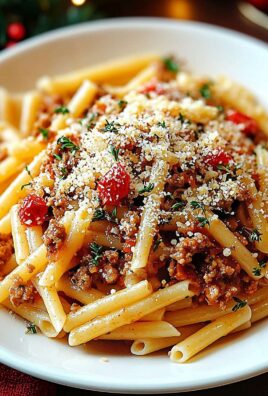Soy Sauce Chow Mein: Craving a quick, easy, and utterly satisfying noodle dish that explodes with savory flavor? Look no further! This recipe delivers a restaurant-quality meal in the comfort of your own kitchen, ready in under 30 minutes. Forget takeout you’ll be amazed at how simple it is to create this classic dish yourself.
Chow Mein, meaning “stir-fried noodles,” has a rich history rooted in Chinese cuisine. While variations abound across different regions and cultures, the essence remains the same: perfectly cooked noodles tossed with a medley of vegetables and a flavorful sauce. This particular Soy Sauce Chow Mein recipe leans into the simplicity and umami-richness of soy sauce, creating a deeply satisfying and comforting meal.
What makes Chow Mein so universally loved? It’s the perfect combination of textures and tastes. The slightly chewy noodles, the crisp-tender vegetables, and the savory, slightly sweet sauce create a symphony of flavors in every bite. Plus, it’s incredibly versatile! You can easily customize it with your favorite vegetables, proteins (like chicken, shrimp, or tofu), and adjust the spice level to your liking. Whether you’re a seasoned cook or a kitchen novice, this Soy Sauce Chow Mein recipe is guaranteed to become a weeknight staple.
Ingredients:
- Noodles: 1 pound fresh or dried chow mein noodles (or spaghetti as a substitute)
- Protein: 1 pound boneless, skinless chicken breasts (or shrimp, beef, or tofu), cut into bite-sized pieces
- Soy Sauce: 1/2 cup low-sodium soy sauce
- Oyster Sauce: 2 tablespoons oyster sauce (optional, but adds depth of flavor)
- Sesame Oil: 1 tablespoon sesame oil
- Shaoxing Wine (or Dry Sherry): 1 tablespoon Shaoxing wine (or dry sherry)
- Cornstarch: 2 tablespoons cornstarch
- Sugar: 1 teaspoon granulated sugar
- Vegetable Oil: 3 tablespoons vegetable oil (or canola oil)
- Garlic: 4 cloves garlic, minced
- Ginger: 1 tablespoon fresh ginger, minced
- Onion: 1 medium yellow onion, thinly sliced
- Carrots: 1 cup carrots, julienned or thinly sliced
- Celery: 1 cup celery, thinly sliced
- Bell Pepper: 1 bell pepper (any color), thinly sliced
- Bean Sprouts: 2 cups fresh bean sprouts
- Green Onions: 2 green onions, thinly sliced, for garnish
- Sesame Seeds: 1 tablespoon sesame seeds, for garnish (optional)
- Chicken Broth (or Water): 1/4 cup chicken broth (or water)
- White Pepper: 1/4 teaspoon white pepper (or black pepper)
Preparing the Protein and Sauce
- First, let’s get the chicken (or your chosen protein) ready. In a medium bowl, combine the chicken pieces with 2 tablespoons of soy sauce, 1 tablespoon of oyster sauce (if using), 1 tablespoon of sesame oil, 1 tablespoon of Shaoxing wine (or dry sherry), 1 tablespoon of cornstarch, and 1/2 teaspoon of sugar. Mix everything really well to make sure the chicken is evenly coated. This marinade will tenderize the chicken and infuse it with flavor. Let it marinate for at least 15 minutes, or even longer if you have the time up to an hour in the refrigerator is great. The longer it marinates, the more flavorful it will be!
- While the chicken is marinating, let’s prepare the sauce. In a separate small bowl, whisk together the remaining 1/4 cup of soy sauce, the remaining 1 tablespoon of cornstarch, the remaining 1/2 teaspoon of sugar, and the chicken broth (or water). Add the white pepper to the sauce mixture. Whisk until everything is smooth and there are no lumps of cornstarch. Set this sauce aside; we’ll use it later to coat the noodles and vegetables.
Cooking the Noodles
- Now, it’s time to cook the noodles. If you’re using fresh chow mein noodles, they usually just need a quick blanching. Bring a large pot of water to a boil. Add the noodles and cook for just 1-2 minutes, until they are softened but still slightly firm. Be careful not to overcook them, as they will become mushy. Drain the noodles immediately and rinse them with cold water to stop the cooking process. This will also prevent them from sticking together.
- If you’re using dried chow mein noodles or spaghetti, cook them according to the package directions until they are al dente. Again, be careful not to overcook them. Drain the noodles and rinse them with cold water. Toss the cooked noodles with a teaspoon of sesame oil to prevent them from sticking together. This step is crucial for achieving that perfect, non-clumpy chow mein texture.
Stir-Frying the Ingredients
- Heat a large wok or a large, deep skillet over high heat. This is important you want the wok to be screaming hot so that the ingredients sear quickly and develop that characteristic wok hei flavor (that slightly smoky, charred taste). Add 1 tablespoon of vegetable oil to the wok and swirl it around to coat the surface.
- Add the marinated chicken to the hot wok. Spread the chicken out in a single layer and let it sear for a minute or two before stirring. This will help it develop a nice crust. Stir-fry the chicken until it is cooked through and no longer pink, about 3-5 minutes. Remove the chicken from the wok and set it aside.
- Add another tablespoon of vegetable oil to the wok. Add the minced garlic and ginger and stir-fry for about 30 seconds, until fragrant. Be careful not to burn the garlic, as it will become bitter. The aroma of garlic and ginger is a key component of chow mein’s deliciousness.
- Add the sliced onion, carrots, and celery to the wok. Stir-fry for 2-3 minutes, until the vegetables are slightly softened. You want them to still have a bit of a crunch.
- Add the sliced bell pepper to the wok and stir-fry for another 1-2 minutes, until it is slightly softened.
- Add the cooked noodles to the wok with the vegetables. Toss everything together to combine.
- Pour the prepared sauce over the noodles and vegetables. Stir-fry everything together for 2-3 minutes, until the sauce has thickened and evenly coated the noodles and vegetables. Make sure to keep stirring constantly to prevent the noodles from sticking to the bottom of the wok.
- Add the cooked chicken back to the wok. Toss everything together to combine and heat through.
- Finally, add the bean sprouts to the wok. Stir-fry for just 30 seconds, until they are slightly wilted but still crunchy. Bean sprouts add a wonderful fresh crunch to the chow mein.
Serving and Garnishing
- Remove the chow mein from the wok and transfer it to a serving platter or individual bowls.
- Garnish with sliced green onions and sesame seeds (if using).
- Serve immediately and enjoy your delicious homemade soy sauce chow mein! This dish is best served hot, right out of the wok.
Tips for the Best Chow Mein
- High Heat is Key: Don’t be afraid to use high heat when stir-frying. This is essential for achieving that authentic wok hei flavor.
- Don’t Overcrowd the Wok: If you’re making a large batch, it’s best to cook the ingredients in batches to avoid overcrowding the wok. Overcrowding will lower the temperature and result in steamed, rather than stir-fried, ingredients.
- Prepare Everything in Advance: Chow mein cooks very quickly, so it’s important to have all of your ingredients prepped and ready to go before you start cooking. This includes chopping the vegetables, marinating the protein, and preparing the sauce.
- Adjust the Sauce to Your Taste: Feel free to adjust the amount of soy sauce, oyster sauce, and sugar in the sauce to suit your personal preferences. If you like a sweeter chow mein, add a little more sugar. If you prefer a saltier chow mein, add a little more soy sauce.
- Add Other Vegetables: You can easily customize this recipe by adding other vegetables that you enjoy, such as mushrooms, snow peas, or bok choy.
- Spice it Up: If you like a little heat, add a pinch of red pepper flakes to the sauce or a drizzle of chili oil to the finished dish.
- Noodle Choice Matters: While spaghetti can work in a pinch, authentic chow mein noodles will give you the best texture and flavor. Look for them in the Asian section of your grocery store or at an Asian market.
- Don’t Skip the Sesame Oil: Sesame oil adds a distinctive nutty flavor that is essential to chow mein.
- Marinating Time: While 15 minutes is the minimum, marinating the protein for longer (up to an hour) will result in a more flavorful and tender dish.

Conclusion:
And there you have it! This Soy Sauce Chow Mein recipe is truly a must-try for anyone craving a quick, flavorful, and satisfying meal. It’s the perfect weeknight dinner solution, offering a delicious alternative to takeout that you can whip up in under 30 minutes. The simplicity of the ingredients combined with the depth of flavor from the soy sauce and aromatics creates a dish that’s both comforting and exciting.
What makes this recipe so special? It’s the balance. The savory soy sauce is perfectly complemented by the subtle sweetness of the sugar and the zing of the ginger and garlic. The noodles absorb all those wonderful flavors, creating a truly unforgettable culinary experience. Plus, it’s incredibly versatile!
Serving Suggestions and Variations:
Don’t be afraid to get creative with your Soy Sauce Chow Mein! Feel free to add your favorite protein. Grilled chicken, shrimp, or tofu would all be fantastic additions. If you’re a vegetarian, consider adding extra vegetables like broccoli florets, bell peppers, or snap peas for added texture and nutrients. A sprinkle of toasted sesame seeds and chopped green onions adds a beautiful finishing touch and enhances the flavor profile.
For a spicier kick, add a dash of chili garlic sauce or a pinch of red pepper flakes. If you prefer a sweeter flavor, you can increase the amount of sugar slightly. Experiment with different types of noodles too! While this recipe calls for classic chow mein noodles, you could also use spaghetti, linguine, or even udon noodles for a different texture.
Consider serving your Soy Sauce Chow Mein with a side of steamed bok choy or a simple cucumber salad for a complete and balanced meal. It’s also delicious served as a side dish alongside grilled meats or fish. Leftovers (if there are any!) are just as delicious the next day, making it perfect for meal prepping.
I truly believe that this recipe will become a staple in your kitchen. It’s easy to make, customizable to your preferences, and always a crowd-pleaser. The rich umami flavor of the soy sauce is what really makes this dish shine, transforming simple noodles into a culinary masterpiece.
So, what are you waiting for? Gather your ingredients, put on your apron, and get cooking! I’m confident that you’ll love this Soy Sauce Chow Mein as much as I do. It’s a guaranteed hit with family and friends, and it’s a fantastic way to impress even the most discerning palates.
Once you’ve tried it, I’d love to hear about your experience! Share your photos and variations on social media using [Your Hashtag Here] and let me know what you think in the comments below. Did you add any special ingredients? Did you make any modifications to the recipe? I’m always eager to learn from your culinary adventures. Happy cooking! I hope you enjoy this simple yet delicious recipe for Soy Sauce Chow Mein!
Soy Sauce Chow Mein: The Ultimate Recipe and Cooking Guide
Quick and easy homemade Chow Mein with tender chicken, crisp vegetables, and flavorful noodles coated in a savory soy sauce-based sauce.
Ingredients
- 1 pound fresh or dried chow mein noodles (or spaghetti as a substitute)
- 1 pound boneless, skinless chicken breasts (or shrimp, beef, or tofu), cut into bite-sized pieces
- 1/2 cup low-sodium soy sauce
- 2 tablespoons oyster sauce (optional, but adds depth of flavor)
- 1 tablespoon sesame oil
- 1 tablespoon Shaoxing wine (or dry sherry)
- 2 tablespoons cornstarch
- 1 teaspoon granulated sugar
- 3 tablespoons vegetable oil (or canola oil)
- 4 cloves garlic, minced
- 1 tablespoon fresh ginger, minced
- 1 medium yellow onion, thinly sliced
- 1 cup carrots, julienned or thinly sliced
- 1 cup celery, thinly sliced
- 1 bell pepper (any color), thinly sliced
- 2 cups fresh bean sprouts
- 2 green onions, thinly sliced, for garnish
- 1 tablespoon sesame seeds, for garnish (optional)
- 1/4 cup chicken broth (or water)
- 1/4 teaspoon white pepper (or black pepper)
Instructions
- In a medium bowl, combine the chicken pieces with 2 tablespoons of soy sauce, 1 tablespoon of oyster sauce (if using), 1 tablespoon of sesame oil, 1 tablespoon of Shaoxing wine (or dry sherry), 1 tablespoon of cornstarch, and 1/2 teaspoon of sugar. Mix well and marinate for at least 15 minutes (up to 1 hour in the refrigerator for best results).
- While the chicken marinates, prepare the sauce. In a small bowl, whisk together the remaining 1/4 cup of soy sauce, the remaining 1 tablespoon of cornstarch, the remaining 1/2 teaspoon of sugar, the chicken broth (or water), and white pepper. Whisk until smooth and set aside.
- If using fresh chow mein noodles, blanch them in a large pot of boiling water for 1-2 minutes, until softened but still slightly firm. Drain and rinse with cold water.
- If using dried chow mein noodles or spaghetti, cook according to package directions until al dente. Drain and rinse with cold water. Toss with a teaspoon of sesame oil to prevent sticking.
- Heat a large wok or deep skillet over high heat. Add 1 tablespoon of vegetable oil and swirl to coat.
- Add the marinated chicken to the hot wok. Spread in a single layer and sear for 1-2 minutes before stirring. Stir-fry until cooked through, about 3-5 minutes. Remove from the wok and set aside.
- Add another tablespoon of vegetable oil to the wok. Add the minced garlic and ginger and stir-fry for about 30 seconds, until fragrant.
- Add the sliced onion, carrots, and celery to the wok. Stir-fry for 2-3 minutes, until slightly softened.
- Add the sliced bell pepper to the wok and stir-fry for another 1-2 minutes, until slightly softened.
- Add the cooked noodles to the wok with the vegetables. Toss to combine.
- Pour the prepared sauce over the noodles and vegetables. Stir-fry for 2-3 minutes, until the sauce has thickened and evenly coated the noodles and vegetables.
- Add the cooked chicken back to the wok. Toss to combine and heat through.
- Finally, add the bean sprouts to the wok. Stir-fry for just 30 seconds, until slightly wilted but still crunchy.
- Remove the chow mein from the wok and transfer to a serving platter or individual bowls.
- Garnish with sliced green onions and sesame seeds (if using).
- Serve immediately.
Notes
- High Heat is Key: Use high heat for authentic wok hei flavor.
- Don’t Overcrowd the Wok: Cook in batches if making a large batch.
- Prepare Everything in Advance: Have all ingredients prepped before cooking.
- Adjust the Sauce to Your Taste: Adjust soy sauce, oyster sauce, and sugar to your preference.
- Add Other Vegetables: Customize with mushrooms, snow peas, or bok choy.
- Spice it Up: Add red pepper flakes or chili oil.
- Noodle Choice Matters: Authentic chow mein noodles are best.
- Don’t Skip the Sesame Oil: Adds a distinctive nutty flavor.
- Marinating Time: Marinating the protein for longer (up to an hour) will result in a more flavorful and tender dish.




